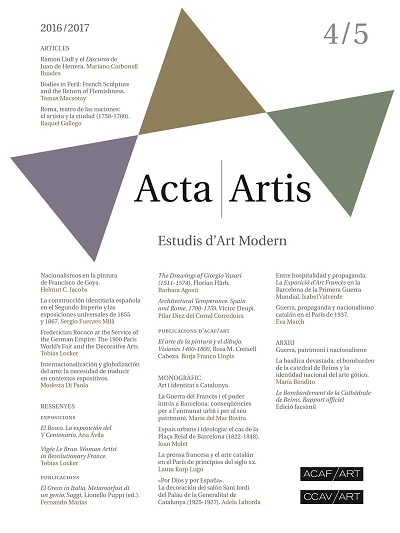Frederician Rococo at the Service of the German Empire: The 1900 Paris World’s Fair and the Decorative Arts
DOI:
https://doi.org/10.1344/actaartis.4-5.2017.19634Resum
At the end of the nineteenth century the decorative sculptor Johann Melchior Kambly was rediscovered by the German art historian Paul Seidel as an artist of the Frederician Rococo. Kambly’s workshop had produced, amongst other things, stately furniture with gilt bronze mounts in the eighteenth century, and after Seidel’s discovery would provide the historical roots for a prestigious branch of the German Empire’s contemporary artistic industry keen to catch up with its competitors, especially the French. Th e article shows how this argument, based on Seidel’s fi ndings, was exploited for nationalistic purposes at the 1900 World’s Fair in Paris. An explanation is given of how it was used on two levels—within the context of the exhibition presented at the German Pavilion, and at the exhibition of a prestigious contemporary furniture ensemble at that World’s Fair that the luxury cabinetmaker Julius Zwiener had created for the German Emperor.
Descàrregues
Número
Secció
Llicència
L'autor/a que publica en aquesta revista està d'acord amb els termes següents:- L'autor/a conserva els drets d’autoria i atorga a la revista el dret de primera publicació de l’obra.
- Els textos es difondran amb la llicència de Reconeixement de Creative Commons, la qual permet compartir l’obra amb tercers, sempre que en reconeguin l’autoria, la publicació inicial en aquesta revista i les condicions de la llicència.


